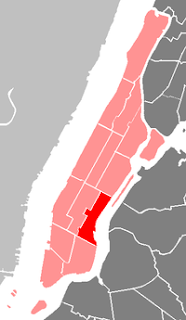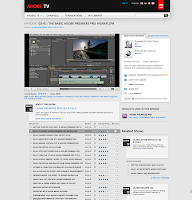Saturday, October 1
Some Links for City Research
New York City Census FactFinder
2000 Census Profiles for New York City (BY STREET ADDRESS/COMMUNITY DISTRICT)
http://gis.nyc.gov/dcp/pa/Map?hseNumber=250&address=WEST+89+STREET&borough=1&event=PROCESS_TRACT
2010 Census: Tables, Maps, and Census Briefs provide detailed information from the PL 94-171 file from the 2010 Census.
http://www.nyc.gov/html/dcp/html/census/census_2010.shtml
MyCITI: the City’s newest mapping resource NYCityMap
http://www.myciti.mas.org/make_a_map_citi2.html
311 Online Service Request Map
http://www.nyc.gov/apps/311srmap/
Wednesday, September 28
pepper spray
http://www.thirteen.org/metrofocus/news/2011/09/observations-of-a-jailed-journalist/#.ToHsrxu2VfU.facebook
http://www.nytimes.com/2011/09/28/nyregion/a-burst-of-pepper-spray-like-a-punch-in-the-face.html?_r=1&ref=nyregion
http://www.nypost.com/p/news/opinion/editorials/downtown_pep_per_rally_sRew6niv9kd6T1EGBM76eO#ixzz1ZF9KZ2Qj
Video Tutorials
Lynda.com is essentially a site of video tutorials. It's a paid site and members have access to all the videos. However, they also have a good selection of free videos that will at least get you started. I would recommend looking at editing in Final Cut Pro and in iMovie.
Another great site filled with video tutorials is Adobe TV. You can learn Premiere Pro or you could also give After Effects a go (the software I used to create the community board video). I've linked the tutorials for the latest versions (since school has the latest versions), but you can also find tutorials for older versions of the software on Adobe TV too.
Final Cut Pro X is Apple's latest version of Final Cut. You can get a free trial of this and the Adobe software for a month if you're interested in working at home.
EDIT /////////////
Turns out that Mac Pro Video and Ripple Training both allow limited previews but cost money to view the whole tutorials so I did some more hunting for free introductory videos: see below.
Apple actually has an entire host of iMovie tutorials and lessons online that are easy to understand and follow. Just click a lesson and there are video tutorials as well as written instructions.
This site (Izzy Video) has a good list of videos.
And here's one of a list of videos from Lynda.com teaching Final Cut. (Click link below to go through.)
Watts Street Commuter Bus Problem
Monday, September 26
Pepper Spray Follow Up
Interview with Pepper Sprayed Protester Chelsea Elliott from ANIMALnewyork.com on Vimeo.
links of the day
http://www.nytimes.com/2011/09/25/nyregion/kcdc-where-skateboarders-can-shop-and-defy-gravity.html?ref=nyregion
http://www.huffingtonpost.com/2011/09/23/ap-keeps-investigating-nypd-spying_n_978128.html
http://www.nytimes.com/2011/09/26/nyregion/in-a-manhattan-park-a-question-of-law-and-a-jewish-symbol.html?_r=1&ref=nyregion
http://www.nytimes.com/2011/09/25/nyregion/protesters-are-gunning-for-wall-street-with-faulty-aim.html?ref=giniabellafante
http://www.nytimes.com/2011/09/26/nyregion/kirsten-john-foy-city-aide-emerges-as-advocate-for-racial-justice.html?ref=nyregion
http://www.newschool.edu/milano/nycaffairs/?s=1:6
Links of the Week by Lauren Valenti
By Joseph Goldstein for the New York Times
"Wired Platforms at Last. Oh No, the Boss Is Calling!"
by Rebecca White for the New York Times
New York Magazine Approval Matrix for Week of October 3rd, 2011
"Paul McCartney, Beatle and Ballet Composer, too"
By Jocelyn Noveck for the San Francisco Chronicle
Bushwick CB4

Bushwick sits in Brooklyn’s 4th community board, or CB4. “The areas now called Williamsburg, Greenpoint and Bushwick were originally one Dutch settlement, the Town of Bushwick.” Since separated, the Bushwick boundaries are now defined by Flushing Avenue to the west, down along the “odd-numbered side” of Broadway until the Eastern Parkway extension. Then the Brooklyn/Queens borough line provides the final side.
Bushwick is still remembered for the destruction that took place within its borders during the 1977 blackouts, with hundreds of stores burned and looted while other shop owners protected their businesses violently. An arson fire – reportedly the second worst fire in New York history – also spread destroying four block and forty-five homes. Since then the population diminished drastically. Figures show that in 1970 there were approximately 138,000 people living in Bushwick, in ’75 that number had decreased to 122,000 and the dropped further to 93,000 by 1980. However, by 2007 the population had increased to 129,980, still less than the population’s original strength.
With 38.9 percent of the Bushwick population foreign born, the neighborhood struggles financially. The seventh most impoverished neighborhood in the city, the approximate household income is around $28,800. In 2007 Bushwick averaged 25 felonies per 1000 persons, making it the 25th most felonious community district in New York City.
However, in the past ten years steps have been made towards restoring Bushwick in the form of government-funded revitalization projects. Between housing improvements as well as revitalization projects within the neighborhood parks, and the comparatively low rent, Bushwick has seen a recent upsurge in population. Commercial development incentives have recently brought in new stores and restaurants and a recent population increase to support them. Thus Bushwick residents have high hopes for a full-scale resurgence.
Manhattan Community Board #3
Source for Data and Photos:
"Improvements" for Bushwick are Questioned

Bushwick, NY- Mixed opinions rose after a power point presentation kicked off the first meeting of Community Board #4, the board for Bushwick in Brooklyn. After a two-month vacation, the Community Board came together on Wednesday September 21st at 6:00pm for the first time since June. The meeting was held at Hope Gardens Multi-Service Center on Linden St. at the corner of Wilson Avenue. The board's chairwoman, Ms. Julie Dent, led the meeting along with 33 board members and a crowd of approximately 40 people from the public, a slim crowd compared to the over 100 that attended the Community Board #2 in Manhattan.
Community board at #4*

Representatives of the Department of Design and Construction presented one of their new projects concerning school safety improvements. This is a citywide project adding up to a total project cost of $2,883,365, according to their website.Construction is planned to begin in the Fall of 2011 and completed in the Spring of 2012. The DDC's city project will include the implementation of ramps at schools, trees and street lights. The project proposed to the Bushwick community specifically, would be to expand 8 intersections near throughout Brooklyn, the intersections are in the vicinity of schools and will create a better field of vision from the driver’s point of view.
Left: Expanded sidewalk at intersection
The DDC representative said, “The intersections will create the illusion of the road getting smaller,” he added added, “so most of the cars will want to slow down.”
Studies conducted in 1998 proved that there was an annual total of 400 pedestrian fatalities, which is more than a 10% increase from the pedestrian fatalities in 2010 according to the New York Pedestrian Safety Study and Action Plan. According to the presentation, the DDC conducted studies at several intersections around grade schools in Brooklyn and Queens. And chose the intersections in their similarity to those they chose in Bushwick.
There was a recommendation in favor of the project by a public attendee, John Wright, 54. However, the board, with support from several voices in the community, decided that voting would be suspended after a resident of Bushwick avenue and Putnam street, an intended location for the project, testified. He insisted that since the study had been conducted, stop signals had been erected at the corners.
“We need up to date data.” He said “since the studies they have made adjustments.”
Worries arose over neighborhood disruption during the construction, snow pileup. There were fears that the project would have become obsolete due to studies that were conducted in 1998 at intersections similar, but not the intersections that were described. In response, the DDC insists that the contractor will be responsible for all damages and an outcome of child safety as well as a high percent decrease of pedestrian casualties. However, they are aware of the inconveniences and appreciate those being effected by them according to the DDC's official website.
The DDC already has the money to begin the project and the board must accept or reject the referendum. Vice chairwoman, Ms. Martha Brown, meditated on what the outcome of the project may be and the public’s influence.
“They are already funded.” She said, “they will probably go along with it, however,” she added, “if the community feels strong enough they can make a difference.” The decision will be made Tuesday September 27th in the same location.
*http://www.maps.luventicus.org/newyork.html
JUMP! JUMP! JUMP!
Brooklyn community board 1
Brooklyn Community Board 4
Brooklyn Community Board 4 encompasses the neighborhood of Bushwick. The land area is 1,311.2 acres with its boundaries running from Flushing Avenue to Conway Street, the odd numbered side of Broadway, the Eastern Parkway extension, and the Brooklyn-Queens borough line.

The Community Board 4 office is located at 315 Wyckoff Avenue on the 2nd floor. Its primary functions are to process resident's complaints and request for services and to provide the Community Board with administrative support.

As of the 2000 United States Census, Community Board 4 has a population of 104,358, primarily made up of Hispanics (67.2%). As a result, many businesses cater to Hispanic residents, like this Mexican bakery and grocery store. The rest of the population is made up of African-Americans (23.8%), Asian or Pacific Islander (3.1%), non-Hispanic Whites (2.9%), American Indian or Native Alaskan (0.3%), two or more races (1.9%), and some other race (0.8%).

In 2008, the average housing income was $28,802, with 32% falling under the poverty line, making Bushwick the 7th most impoverished neighborhood in New York City.

Community board meetings are held at Hope Gardens Community Center at 195 Linden Street on the corner of Wilson Avenue. The meetings are often concerning land use and zoning matters, the city's budget, and municipal service delivery.

The Community Board also deals with matters relating to the welfare of the community, including but not limited to traffic problems, missing or damaged signs, and malfunctioning street lights.
Brooklyn Community Board 8
Manhattan Community Board #6
 |
| A map illustrating Community Board #6, courtesy of Wikipedia. |
















